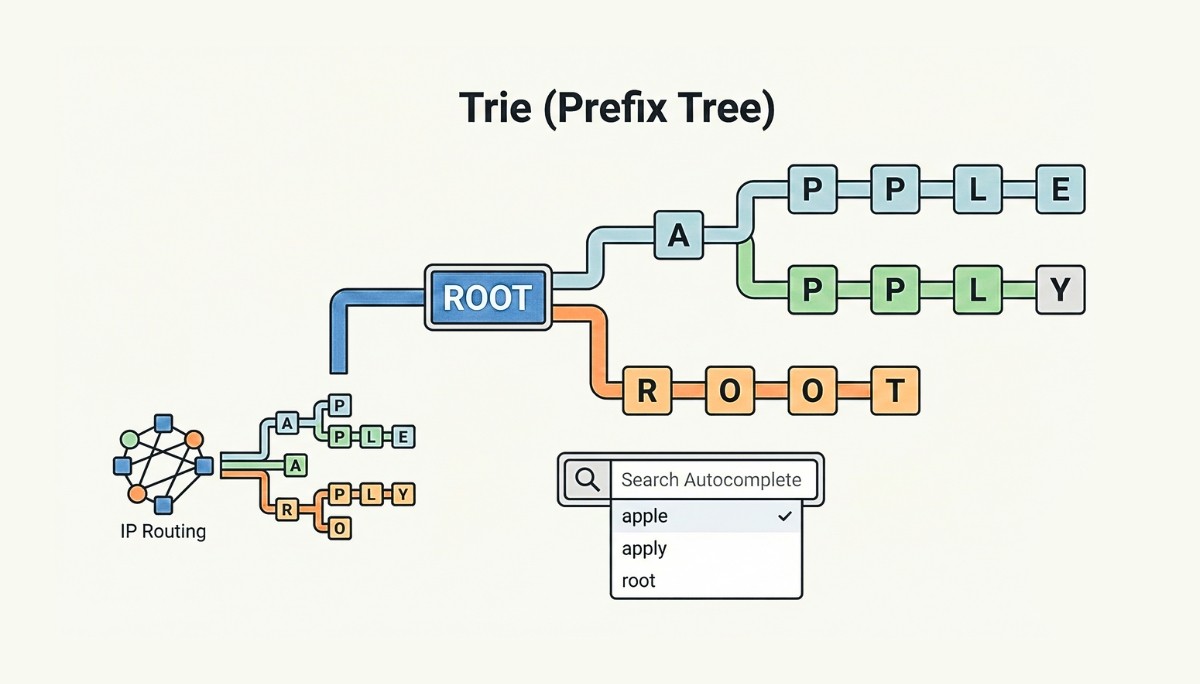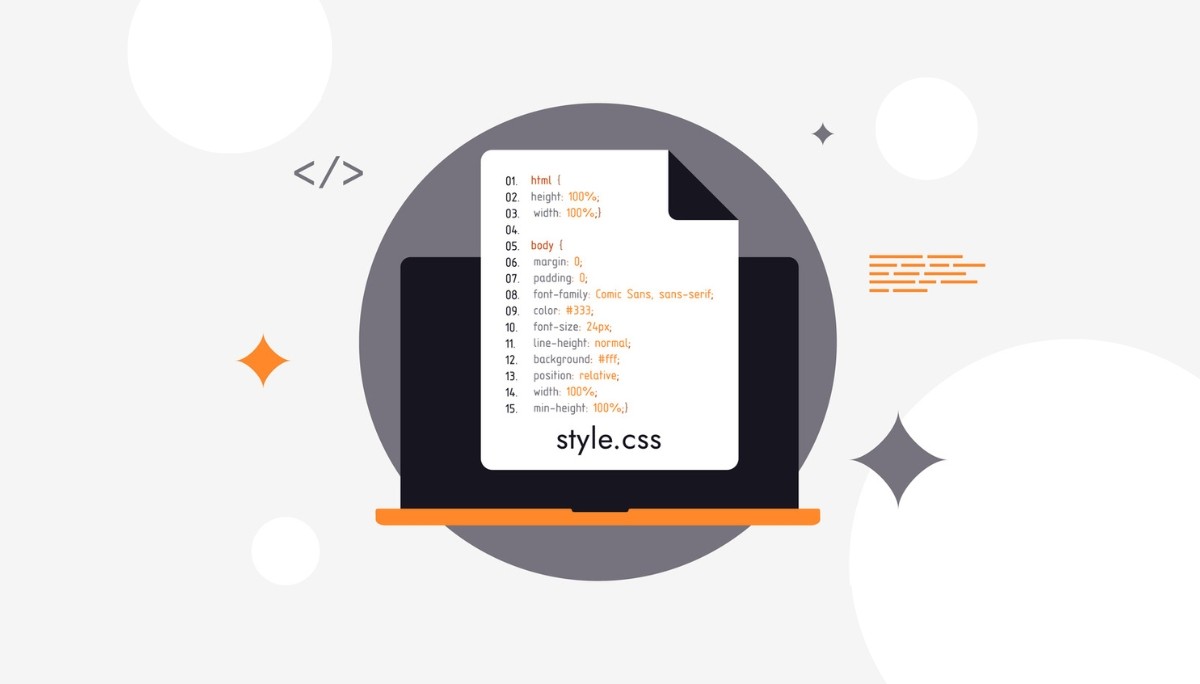Computer Vision Detection, Video Tracking, and AI Applications
By
Ethan Fahey
•
Sep 12, 2025
Tracking detection is the process of following objects across video frames while keeping their identities intact, a key challenge in computer vision. In this article, we’ll walk through how it works, cover popular algorithms like Kalman Filter and DeepSORT, and look at real-world applications in areas such as surveillance and autonomous driving. For recruiters and AI engineers, these concepts highlight the growing demand for talent with expertise in applied AI. Platforms like Fonzi AI make it easier to spot professionals with these specialized skills, helping businesses stay ahead in AI-driven innovation.
Key Takeaways
Tracking detection combines object detection and tracking to maintain the identity of objects across video frames, essential for applications like surveillance and autonomous driving.
The tracking-by-detection approach utilizes independent detectors and trackers, with methods like online and batch tracking improving accuracy and performance in real-time scenarios.
Popular tracking algorithms such as Kalman Filter, DeepSORT, and ByteTrack enhance object tracking efficiency and accuracy, addressing challenges like occlusion and scale variability.
Understanding Tracking Detection

Tracking detection is the process of locating an object in successive video frames, ensuring that its identity is preserved over time. Video tracking and object tracking algorithms combine object detection with tracking to identify and follow entities across multiple frames, making it possible to track objects even when they move or change appearance. This combination allows for the continuous monitoring of tracked objects, which is crucial in applications like surveillance and autonomous driving.
The primary objective of tracking detection is to maintain the identity of objects across frames, establishing a connection between them. This approach enables object tracking systems to accurately follow multiple objects, maintaining their unique identities even in challenging scenarios like occlusions. Tracking algorithms typically operate faster than detection algorithms because they utilize prior knowledge about object motion to predict future positions, enhancing the efficiency of the tracking process. An object detector can further improve the accuracy of this entire process, particularly in detecting objects and object detections.
In many computer vision applications, tracking detection is used in conjunction with object detection to ensure accuracy and reliability over time. This combination is vital for real-time tracking, enabling the system to detect and track objects simultaneously.
The ability to track multiple objects and a single object with high multiple object tracking accuracy is essential for applications such as traffic monitoring, surveillance, and sports analytics, where real-time tracking speed is critical for decision-making and analysis, including multiple instances of single object tracking data collection to identify objects.
How Tracking Detection Works
Tracking-by-detection is a common approach used in object tracking systems, where an independent detector identifies objects, and a tracker links these detections over time. This method ensures that each detected object is assigned a unique identification, allowing for continuous monitoring across video frames. The tracking process typically involves several stages, including object detection, assignment of unique IDs, and trajectory prediction.
Online tracking methods rely solely on current and past input frame information, which can limit their performance compared to batch methods that utilize future frame information for enhanced object identity recognition. Batch tracking methods, on the other hand, use information from future frames and subsequent frames to improve the accuracy of the tracking algorithm. Despite the limitations of online tracking, it is widely used due to its ability to provide real-time tracking, which is essential for applications like surveillance and autonomous driving. Traditional methods, however, may not offer the same level of efficiency in these scenarios, especially when considering the previous frame.
After the initial detection, object tracking algorithms predict the movement of detected objects and follow them throughout the video. The tracking-by-detection approach is particularly effective in maintaining the identity of objects over time, even in challenging scenarios such as partial occlusions. Linking detected objects across several consecutive frames allows tracking algorithms to offer accurate and reliable data, essential for real-time monitoring and analysis applications.
Popular Algorithms for Tracking Detection

In the realm of object tracking, several popular object tracking algorithms are employed to ensure high accuracy and efficiency. The object tracking models vary from basic machine learning techniques to complex recurrent neural networks and deep learning networks. Each type has its own strengths and applications.
Let’s explore some of the widely used algorithms in tracking detection, including the Kalman Filter, DeepSORT, and ByteTrack.
Kalman Filter
The Kalman Filter is a fundamental algorithm in object tracking that operates by predicting an object’s future position using its last known state and a mathematical model. It effectively tracks objects even in dynamic environments. This algorithm maintains an internal representation of the object’s position, velocity, and acceleration, enabling accurate motion estimation and trajectory prediction.
Introduced in the 1990s, the Kalman Filter revolutionized object tracking by providing a reliable method for predicting object motion. It is capable of maintaining an internal representation that includes an object’s position, velocity, and acceleration, which enhances its ability to track objects accurately over time.
The Kalman Filter is widely used in various computer vision applications due to its simplicity and effectiveness in real-time tracking scenarios.
DeepSORT
DeepSORT is an advanced tracking algorithm that leverages deep learning for object identification. By incorporating appearance information through deep learning, DeepSORT significantly enhances tracking performance and reduces identity switches, making it ideal for applications such as surveillance and crowd monitoring.
This integration of appearance information allows DeepSORT to maintain accurate tracking even in complex environments, ensuring reliable object detection and tracking over time using siamese neural networks.
ByteTrack
ByteTrack is designed to improve multi-object tracking performance by utilizing all detection boxes, not just the high-scoring ones. This approach allows ByteTrack to handle partial occlusions effectively while keeping track of objects, ensuring accurate tracking even in challenging scenarios. Leveraging all detection scores, ByteTrack enhances tracking robustness, making it suitable for diverse computer vision applications.
This algorithm processes each video frame by considering all bounding boxes, which helps maintain accurate tracking data throughout the video sequence. ByteTrack’s ability to use all detection boxes ensures that no objects are missed, providing reliable tracking performance in real-time scenarios. This makes it an excellent choice for applications that require high accuracy and efficiency in tracking multiple objects with precise bounding box predictions.
Key Features of Effective Tracking Detection Systems

Effective tracking detection systems are characterized by several key features that ensure high accuracy and reliability. One of the most important features is real-time processing, which:
Allows the system to handle high-frame-rate videos with exceptional accuracy.
As exemplified by Ultralytics YOLO, it enhances tracking detection by processing videos in real-time and delivering precise tracking even in dynamic environments.
Is essential for applications such as surveillance and autonomous driving, where timely responses are critical.
Another crucial feature is motion prediction, which forecasts the future positions of detected objects based on their current trajectories. This technique enhances the accuracy of object tracking systems by allowing them to anticipate the movement of tracked objects and new objects, reducing the likelihood of losing track of moving objects.
Additionally, feature extraction is essential for analyzing similarities between detections, ensuring that the identity of tracked objects is maintained across the first frame. This process involves extracting relevant features from the detected objects, which helps in distinguishing them from other objects in the video, providing a visual representation of the feature map data.
Multithreaded tracking is another feature that enhances the performance of tracking detection systems by allowing them to handle multiple input video streams concurrently. This capability is particularly useful in modern surveillance systems, where multiple video streams need to be monitored simultaneously for real-time threat detection and response.
Incorporating these key features allows tracking detection systems to achieve high accuracy, reliability, and efficiency, making them suitable for various computer vision applications.
Top Tools for Tracking Detection in Computer Vision
Several tools are available for implementing effective tracking detection in computer vision using an object tracker, including those that focus on target initialization and image tracking. These tools offer various features and capabilities that cater to different requirements and applications, including object trackers.
Let’s explore some of the top tools for tracking detection, including Norfair, MMTracking, FairMOT, BoT-SORT, and StrongSORT.
Norfair
Norfair is a lightweight and customizable object-tracking library designed specifically for tracking objects in Python. Its lightweight nature makes it ideal for applications that require efficient and flexible tracking solutions.
Norfair’s customizable features allow developers to tailor the library to their specific needs, ensuring reliable and accurate object tracking in various scenarios.
MMTracking
MMTracking is an open-source toolbox built on the PyTorch framework, combining object detection and tracking into a single platform. Its modular design allows users to easily customize and adapt the detection and tracking components to their specific requirements. This flexibility makes MMTracking suitable for a wide range of applications, from automated inspection to autonomous driving.
The PyTorch foundation of MMTracking provides flexibility and efficiency in deployment, enabling developers to leverage the power of deep learning for accurate object tracking. By combining detection and tracking capabilities, MMTracking offers a comprehensive solution for real-time object tracking in various computer vision applications.
FairMOT
FairMOT employs a balanced approach to treat detection and re-identification tasks equally, enhancing overall performance. This balanced approach ensures that the algorithm performs well across all classes, providing accurate and reliable object tracking.
FairMOT’s ability to handle both detection and re-identification tasks makes it suitable for applications that require high accuracy in tracking multiple objects.
BoT-SORT
BoT-SORT is an advanced method for tracking multiple objects that improves on the original SORT algorithm. Developed by researchers from Tel-Aviv University, BoT-SORT incorporates advanced features such as Camera Motion Compensation, which enhances tracking accuracy in crowded or complex environments. This makes BoT-SORT particularly effective in scenarios where traditional tracking algorithms may struggle.
The advanced features of BoT-SORT, including its ability to handle camera motion, make it a valuable tool for applications like surveillance and traffic monitoring. Improving tracking accuracy under challenging conditions, BoT-SORT ensures reliable and efficient object tracking in various real-world scenarios.
StrongSORT
StrongSORT integrates advanced algorithms like AFLink and GSI to enhance tracking performance in dynamic settings. These advanced algorithms allow StrongSORT to maintain accurate object tracking even in rapidly changing environments, making it suitable for applications that require high precision and reliability.
Challenges in Tracking Detection

Despite the advancements in object tracking, several challenges persist that can impact the accuracy and reliability of tracking systems:
Occlusion, where objects are temporarily obscured by other objects or obstacles.
Occlusions can lead to the loss of track and misidentification of objects, complicating the tracking process and reducing overall accuracy.
Effective tracking algorithms must incorporate strategies to handle occlusions, ensuring continuous monitoring of tracked objects even in crowded environments.
Another challenge in tracking detection is managing varying object scales and multiple scales of aspect ratios. Objects in a video file can appear at different sizes and angles, making it difficult for tracking algorithms to maintain consistent accuracy. This variability can cause confusion in detecting and tracking objects, leading to size misconceptions and affecting detection accuracy. Advanced tracking systems must be capable of adapting to these changes in scale and aspect ratios to ensure reliable performance with video files.
Cluttered backgrounds introduce noise and redundant information, further complicating the tracking process. In such environments, tracking small objects or lightly colored objects becomes particularly challenging, as they can easily blend into the background or be overshadowed by other elements. Ensuring high accuracy in cluttered environments requires sophisticated tracking algorithms that can effectively distinguish between relevant and irrelevant information, maintaining the identity of tracked objects across video frames.
Real-World Applications of Tracking Detection

Object tracking has a wide range of real-world applications across various industries, from enhancing security surveillance to improving retail analytics. The versatility of tracking detection systems allows them to be employed in numerous scenarios, providing valuable real-time data for decision-making and automated processes.
Let’s explore some of the key applications of tracking detection in autonomous vehicles, retail analytics, sports analytics, surveillance systems, and manufacturing.
Autonomous Vehicles
In autonomous vehicles, tracking detection is crucial for enhancing navigation and safety by accurately identifying and following objects. Modern autonomous vehicles utilize cameras and robust neural processing engines to improve their object detection capabilities, ensuring timely reactions to the behavior of pedestrians and other vehicles. Multiple object tracking is essential in autonomous driving to detect and predict the movements of various objects, providing a safer driving experience.
Companies like Tesla, Waymo, and Baidu are continuously enhancing their AI infrastructure to improve tracking capabilities in their autonomous vehicles. These companies leverage advanced tracking algorithms to ensure their vehicles can navigate complex environments with high accuracy and reliability.
The integration of tracking detection systems in autonomous vehicles represents a significant step towards achieving fully autonomous driving, where safety and efficiency are paramount.
Retail Analytics
Tracking algorithms are extensively used in retail to detect and track customer movement via surveillance cameras. Analyzing video data allows retailers to gain insights into shopper behavior, such as movement patterns across different store zones. This information helps optimize product placement and store layout, ultimately enhancing the shopping experience and driving sales.
Tracking data provides valuable insights to store owners by identifying customer hot spots and movement patterns, allowing for informed decisions on product placement and marketing strategies. Target positioning data association tracking detection systems enable retailers to enhance customer analytics, improve operational efficiency, and create a more personalized shopping experience.
Sports Analytics
In sports analytics, tracking technologies provide comprehensive data on player movements, offering insights for improving training and game strategies. Tracking data allows coaches and analysts to identify patterns, strengths, and weaknesses in player performance, facilitating targeted training programs and strategic planning.
The use of tracking detection systems in sports enhances performance analysis and contributes to the overall success of teams and athletes.
Surveillance Systems
Tracking detection plays a vital role in enhancing security by enabling the monitoring of multiple video streams simultaneously, allowing for real-time threat detection and response. Effective tracking detection systems are characterized by features such as real-time processing, high accuracy, and robustness to various environmental challenges. These systems combine object detection and tracking to follow objects across multiple video frames, ensuring continuous monitoring and threat assessment.
Common challenges in tracking detection for surveillance systems include managing occlusions, varying object scales, and ensuring accuracy in cluttered environments. Addressing these challenges allows modern surveillance systems to significantly enhance threat detection capabilities, improving overall security measures and response times.
The integration of AI and advanced tracking algorithms in surveillance systems represents a significant advancement in maintaining public safety and managing events like traffic control.
Manufacturing
In the manufacturing industry, tracking technologies ensure quality control by automatically identifying defects on production lines. Advanced tracking algorithms enable manufacturers to uphold high standards of product quality and efficiency. BoT-SORT, for instance, is recommended for industrial applications like inventory management, offering real-time updates on the location and status of each item.
ByteTrack is used in scenarios like warehouse robots tracking boxes, which helps streamline operations and improve efficiency. By accurately tracking the movement of items, manufacturers can optimize their production processes and reduce errors.
The use of tracking detection systems in manufacturing enhances operational efficiency, ensuring that products meet quality standards and are delivered on time.
Introducing Fonzi: The Best Way to Hire Elite AI Engineers
Fonzi is a curated AI engineering talent marketplace that connects companies to top-tier, pre-vetted AI engineers through its recurring hiring event, Match Day. This platform supports a Match Day event that enables rapid talent engagement, often allowing companies to extend offers within 48 hours. Fonzi’s approach combines advanced technology with tailored recruitment strategies, catering to the specific needs of employers and ensuring a high-quality hiring experience.
Candidates receive personalized feedback from Fonzi, aiding in their job search improvement while also receiving transparent status updates throughout the hiring process. This unique approach not only benefits employers by providing access to elite AI talent but also ensures a positive experience for candidates, fostering a more engaged and well-matched talent pool.
Fonzi’s innovative platform represents the best way to hire elite AI engineers, making the hiring process fast, consistent, and scalable.
How Fonzi Works
Fonzi incorporates the following features to enhance the quality of hires:
Built-in fraud detection and bias auditing in its evaluation process
A fast and scalable hiring experience to help organizations consistently find qualified candidates
A multi-agent AI system that enhances initial candidate screening and ensures fairness in the hiring process
Delivery of high-signal, structured evaluations
Unlike black-box AI tools or traditional job boards, Fonzi offers transparency and reliability in its hiring process. The platform’s multi-agent AI and tailored recruitment strategies ensure that candidates are evaluated fairly and consistently, resulting in a positive hiring experience for both employers and candidates.
By leveraging advanced technology and a structured approach, Fonzi makes hiring elite AI engineers efficient and effective.
Why Choose Fonzi?
Fonzi organizes a structured hiring event called Match Day, which:
Lasts for 48 hours
Features pre-vetted candidates
Allows companies to make direct offers to qualified candidates
Streamlines the hiring process and reduces time-to-hire
Automates recruitment tasks for a quicker and more efficient hiring process
These features make Fonzi an ideal choice for organizations looking to hire elite AI talent.
The dedicated concierge recruiter at Fonzi assists candidates throughout the hiring journey, promoting a positive experience and ensuring that they are well-matched with potential employers. Fonzi supports both early-stage startups and large enterprises, from the first AI hire to the 10,000th hire.
By maintaining uniformity across evaluation criteria, Fonzi ensures consistent interview experiences and high-quality hires. This makes Fonzi the best choice for companies seeking to hire elite AI engineers quickly and efficiently.
Summary
In summary, tracking detection is a vital component of computer vision that enables the accurate and reliable tracking of objects across video frames. By combining object detection with tracking, these systems ensure the continuous monitoring of tracked objects, even in challenging scenarios. From popular algorithms like Kalman Filter, DeepSORT, and ByteTrack to top tools like Norfair, MMTracking, and FairMOT, the advancements in tracking detection have paved the way for numerous real-world applications across various industries.
Fonzi represents the future of AI hiring, providing a curated marketplace that connects companies to top-tier, pre-vetted AI engineers. With its innovative Match Day event, advanced technology, and tailored recruitment strategies, Fonzi ensures a fast, consistent, and scalable hiring process. Whether you’re looking to implement tracking detection systems or hire elite AI talent, the insights provided in this guide will equip you with the knowledge to navigate the evolving landscape of AI and computer vision.




